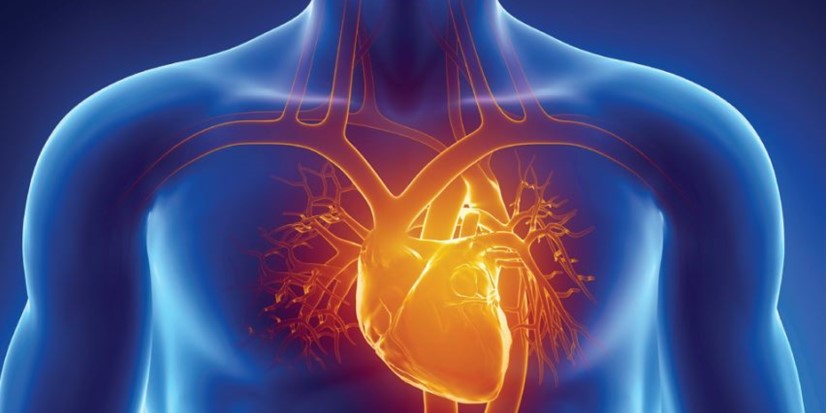Exploring the wider role of Cardiology in preventive health
Wiki Article
Comprehending the Significance of Cardiology in Modern Medical Care Providers
Cardiology plays an important duty in modern medical care, especially as heart problem remains to be the leading source of mortality worldwide. Advancements in diagnostics and treatment have changed individual treatment, allowing earlier interventions and boosted outcomes. Additionally, the shift towards preventative cardiology encourages individuals to handle their health proactively. As technology proceeds to develop, the combination of cutting-edge solutions might further redefine cardiology's influence on public wellness, triggering a more detailed exam of arising patterns and their ramifications.The Prevalence of Cardiovascular Disease and Its Effect on Public Wellness
Heart condition remains the leading cause of fatality internationally, its influence extends far past private clients to affect public wellness systems and economies. The high frequency of heart problem positions a substantial pressure on health care resources, requiring increased financing for rehab, therapy, and prevention programs. Public health campaigns should deal with risk elements such as obesity, smoking cigarettes, and inactive way of livings, which add greatly to the increasing occurrence of heart conditions.Moreover, the financial concern connected with heart illness is immense, incorporating not only straight clinical costs however likewise indirect expenditures connected to lost efficiency and premature mortality. Communities encounter difficulties in taking care of these expenses, usually causing variations in healthcare access and results. As the populace ages and lifestyle-related dangers remain to escalate, the necessity for reliable cardiology treatments comes to be paramount. As a result, attending to heart condition is not just a matter of private wellness but additionally an important public health and wellness priority.Breakthroughs in Cardiac Diagnostics and Imaging Techniques
Current improvements in cardiac diagnostics and imaging methods have transformed the field of cardiology, improving the ability to identify and keep track of heart problem. Strategies such as cardiac MRI, CT angiography, and echocardiography have actually ended up being increasingly sophisticated, offering thorough photos of heart structures and features. These methods permit the very early recognition of problems like coronary artery disease, heart failing, and valvular disorders.Moreover, advancements in non-invasive diagnostics, such as wearable innovation and remote monitoring gadgets, have encouraged clients and healthcare companies. These devices promote real-time tracking of heart rhythms and various other vital indicators, bring about prompt interventions. In addition, synthetic knowledge is being integrated right into imaging evaluation, enhancing precision and effectiveness in medical diagnosis.Innovations in Treatment Choices for Heart Conditions
Current innovations in cardiology have led to considerable developments in therapy options for heart disease. These consist of advanced surgical techniques that enhance step-by-step end results and arising medications that use brand-new avenues for therapy. As the field advances, these advancements play an essential duty in enhancing client care and end results.Advanced Surgical Techniques
Innovations in medical techniques have actually transformed the landscape of cardiology, offering new hope for people with heart disease. Minimally invasive procedures, such as catheter-based treatments, have actually significantly decreased healing times and medical facility stays. Methods like robotic-assisted surgery enhance accuracy, allowing surgeons to browse complex anatomical structures with higher accuracy. In addition, innovations in imaging innovation help with real-time visualization during procedures, improving end results. Transcatheter aortic valve substitute (TAVR) exhibits a breakthrough in dealing with aortic stenosis, allowing shutoff replacement without open-heart surgical treatment. Additionally, hybrid methods that integrate medical and catheter-based methods give tailored options for different cardiac concerns. These sophisticated medical methods not only improve individual safety and security however additionally expand treatment choices, highlighting the important function of technology in modern cardiology methods.Emerging Therapies and medicines
As the landscape of cardiology proceeds to develop, arising medicines and treatments play a pivotal duty in boosting treatment options for heart disease. Advancements such as novel anticoagulants and progressed lipid-lowering agents have actually changed the management of cardio illness, considerably reducing patient morbidity and mortality. Additionally, the development of genetics therapies and regenerative medicine provides encouraging opportunities for dealing with problems previously regarded incurable. Clinical tests are consistently revealing the efficacy of these treatments, pushing the borders of standard therapies. Furthermore, the integration of digital wellness modern technologies promotes tailored medicine, permitting customized therapy plans based upon hereditary and way of life aspects. Jointly, these advancements underscore the dynamic nature of cardiology, enhancing patient outcomes and redefining requirements of care in modern-day health care.The Function of Preventive Cardiology in Client Care
Precautionary cardiology plays an important duty in client treatment by concentrating on the identification of threat variables that add to cardiovascular disease. Through way of living adjustment techniques and early detection techniques, health care carriers can effectively decrease the occurrence of cardio occasions - Cardiology Jupiter. This proactive technique not just boosts client results however also promotes lasting wellnessRisk Element Recognition
While heart diseases stay a leading source of morbidity and mortality worldwide, reliable risk aspect recognition acts as a cornerstone of preventive cardiology. Recognizing risk variables such as high blood pressure, diabetic issues, hyperlipidemia, and family history is crucial for very early treatment. Medical care experts make use of various evaluating techniques to review these elements, permitting tailored preventive actions. Additionally, recognizing a patient's way of life choices, such as smoking and physical inactivity, additionally notifies threat analyses. This thorough assessment enables clinicians to establish personalized care strategies targeted at mitigating threats. By prioritizing threat element recognition, healthcare systems can improve client results and decrease the overall worry of cardio illness, eventually adding to enhanced public health approaches and resource allocation.Way Of Living Modification Approaches
A plethora of research studies highlights the critical function of way of living modification strategies in lowering heart disease risk. These strategies encompass nutritional modifications, increased exercise, smoking cigarettes cessation, and weight monitoring. By adopting a heart-healthy diet regimen rich in fruits, veggies, entire grains, and lean go to my blog healthy proteins, people can lower cholesterol levels and blood stress. Normal exercise reinforces the heart and boosts overall cardiovascular wellness. Additionally, quitting smoking considerably minimizes the danger of heart condition and improves recovery rates for those with status quo. Weight monitoring better adds to cardiovascular health by alleviating various other risk aspects such as diabetic issues and high blood pressure. Carrying out these lifestyle changes not only promotes individual health however additionally works as a foundation of preventative cardiology in client care.Very Early Detection Techniques
Way of living adjustments significantly add to decreasing heart disease risks, however they are most efficient when coupled with early detection techniques. Precautionary cardiology stresses the significance of identifying possible heart problems prior to they rise right into significant problems. Techniques such as blood stress monitoring, cholesterol screening, and progressed imaging modern technologies like echocardiograms play vital duties in reviewing cardio wellness. Biomarkers and hereditary testing also boost the accuracy of early detection, permitting customized preventive strategies. Normal cardiac threat examinations equip healthcare service providers to step in proactively, potentially avoiding cardiovascular disease and strokes (Dr Garcia). By integrating these early detection approaches right into routine treatment, clients can benefit from prompt way of life treatments and targeted treatments, eventually improving results and boosting lifestyleIntegrating Technology Into Cardiology Practices
As advancements in technology proceed to reshape different areas, the integration of innovative devices and systems right into cardiology practices has actually come to be essential for boosting person treatment and outcomes. Telemedicine systems allow cardiologists to keep track of individuals remotely, enhancing access to care while decreasing the worry on health care centers. Wearable tools, such as smartwatches, enable constant heart price monitoring, signaling both physicians and individuals to possible problems in real-time. In addition, expert system (AI) is being used to analyze vast amounts of cardiac data, assisting in very early diagnosis and individualized treatment strategies. Advanced imaging strategies, including 3D echocardiography, improve visualization of heart frameworks, causing much more accurate treatments. Electronic wellness documents (EHRs) simplify person info management, making sure that cardiologists have immediate access to vital data. With each other, these technological improvements are changing cardiology, promoting positive management and boosted health outcomes for clients with cardiovascular conditions.The Relevance of Patient Education and Involvement
Person education and learning and involvement play a pivotal role in the administration of cardiovascular wellness. By furnishing people with understanding about their problems, treatment options, and way of life changes, doctor encourage individuals to take an active function in their treatment. This aggressive strategy can bring about boosted adherence to suggested drugs, nutritional modifications, and workout programs, ultimately lowering the threat of complications.Engagement additionally promotes a solid patient-provider connection, urging open interaction and trust fund. When clients Source really feel notified and entailed, they are a lot more most likely to voice issues and ask inquiries, which can cause much better professional end results. Additionally, instructional resources, such as workshops or digital systems, can boost understanding and promote self-management methods. Generally, prioritizing patient education and learning and interaction is vital for boosting cardio health and wellness, enhancing lifestyle, and reducing health care expenses related to cardiovascular conditions.Future Trends in Cardiology and Their Prospective Effect

Frequently Asked Concerns
What Lifestyle Modifications Can Minimize Heart Condition Threat?
The present inquiry addresses way of living changes that can substantially decrease heart condition risk. Cardiologist near me. Adopting a balanced diet, participating in normal exercise, keeping a healthy and balanced weight, managing stress and anxiety, and avoiding cigarette can especially enhance cardiovascular healthJust How Can I Recognize Very Early Indications of Heart Problems?
Recognizing early signs of heart troubles includes surveillance signs and symptoms such as chest discomfort, shortness of breath, exhaustion, and irregular heartbeat. Timely recognition of these indicators can prompt required medical evaluation and treatment for better end results.What Are the Distinctions In Between Cardiologists and Heart Surgeons?
The differences between cardiologists and cardiac surgeons exist in their functions; cardiologists mainly take care of and identify heart disease via non-invasive approaches, while cardiac specialists execute surgeries to remedy architectural heart issues. Each plays a vital, distinctive role.
Just how Often Should I Get My Heart Health Checked?
The frequency of heart medical examination varies based on private threat elements. Typically, grownups should undertake examinations every one to two years, while those with existing conditions may need even more constant assessments as suggested by health care professionals.What Duty Does Genetics Play in Cardiovascular Disease Threat?
Genetics considerably influences heart condition danger, with familial patterns showing acquired conditions. Details genes can incline individuals to high blood pressure, cholesterol issues, and various other cardiovascular problems, highlighting the significance of hereditary screening in assessing heart health. Heart illness stays the leading cause of death worldwide, its effect expands much past specific people to influence public health and wellness systems and economic climates. Public health and wellness efforts must address danger elements such as weight problems, cigarette smoking, and sedentary way of livings, which add substantially to the climbing incidence of heart conditions.Moreover, the financial burden associated with heart disease is enormous, encompassing not just direct medical expenses yet also indirect costs related to shed performance and early death. Precautionary cardiology plays a vital duty in client treatment by concentrating on the recognition of threat factors that contribute to heart condition. Man-made knowledge (AI) and maker discovering are boosting diagnostics and client tracking, making it possible for very early discovery of heart diseases. The differences in between cardiologists and cardiac doctors lie in their duties; cardiologists primarily manage and diagnose heart problems via non-invasive methods, while heart surgeons do medical treatments to moved here deal with architectural heart issues.Report this wiki page